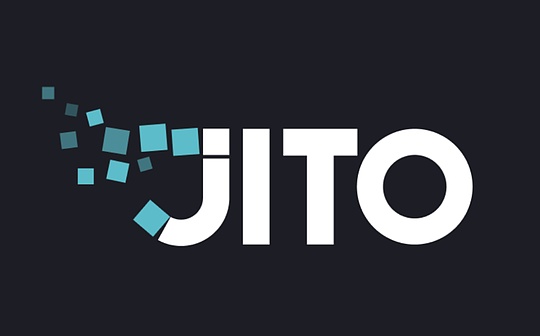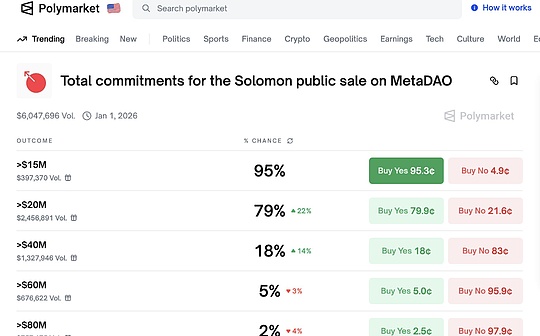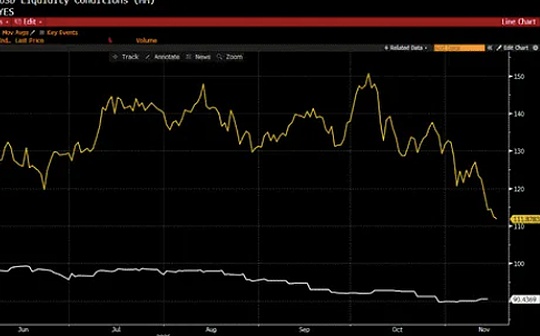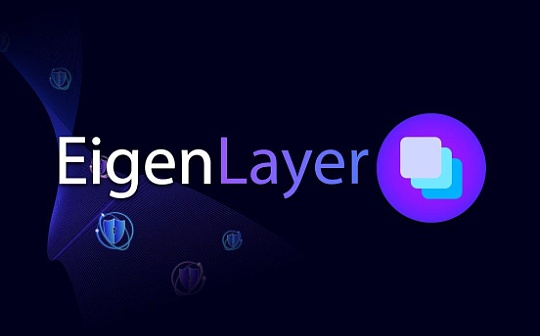
Author: Chandan, web3 Research, translation: vernacular blockchain
This is a brief introduction to AVS and node operators, as well as various LRT protocols, and the latest developments in the field.
To become an Ethereum verifier, you need two resources: 32 ETH and the hardware required to run the node software.If you are missing the 32 ETH you need, you can entrust the funds to the liquidPledgeSolution.These platforms will supplement your ETH and operate nodes on your behalf to share with you the rewards you received.
Currently, Lido accounts for 30% of the market share in the Liquid Restaking solution market, followed by Coinbase accounts for 14%, Binance accounts for 3.88%, and other providers.

flowPledgeSolutions such as Lido, Coinbase, and Rocket Pool provide derivative tokens that stake ETH on behalf of users.Lido provides STETH, Coinbase provides cbETH, and Rocket Pool provides RETH.These liquid staking derivative tokens function in the DeFi ecosystem similar to other ERC20Tokens, allowing users to provide liquidity on decentralized trading platforms (DEXs), participate in borrowing protocols, and participate in various other DeFi activities.
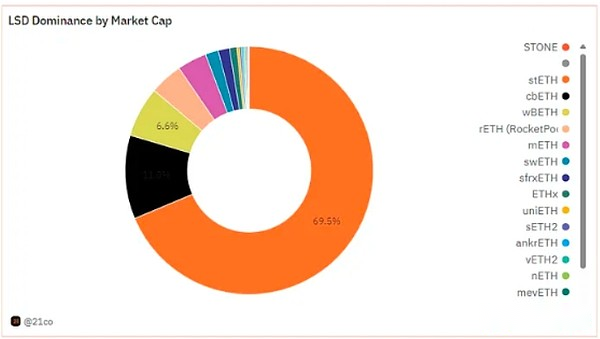
1. EigenLayer
EigenLayer is a kind of driving movementPledgeRestaking agreement.While mobile staking allows users to use their staked tokens in other DeFi protocols, EigenLayer makes it possible for ETH to restake in other protocols that require security.useEigenLayer’s protocol for restaking ETH for security is called Active Verification Service (AVS).
Active Verification Service (AVS) uses the EigenLayer protocol to integrate with Ethereum’s security mechanism, enhancing verification of blockchain applications without their own consensus mechanism.
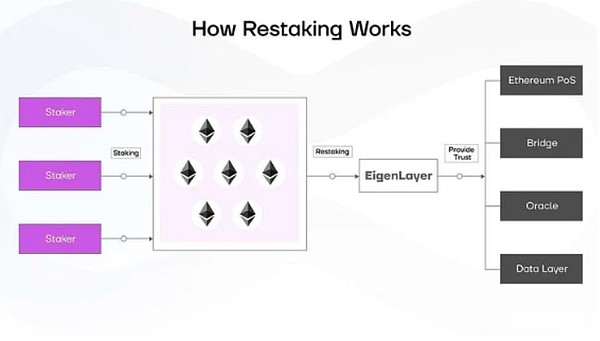
ETH is both on the Ethereum network and on the Active Verification Service (AVS).PledgeNow.Famous projects such as AltLayer, Celo, Espresso, EigenDA, Hyperlane, Mantle and Polyhedra are planning to participate in EigenLayer as early AVS.Staking ETH can be rewarded from two types of staking, although it is subject to different penalties.
How ETH is on the Ethereum network and othersAVSProgress on the agreementPledge?
Ethereum validators can set up fetch credentials to allow ETH fetching, including EigenLayer’s smart contracts.This allows Ethereum validators to participate in AVS verification through EigenLayer’s restake, run the required clients, and set the extracted credentials to EigenLayer’s smart contract.If the verifier meets the AVS penalty conditions, EigenLayer has the right to punish ETH, so that the restaked ETH is subject to two penalties.
2.Node operators within EigenLayer
Node operators protect AVS transactions by restaking their ETH on EigenLayer and receive additional verification rewards from AVS operations on top of Ethereum rewards.This provides validators with an economically incentivized ecosystem to support AVS networks.
1) What is the Liquid RestakingToken protocol?
The liquid re-staking Token (LRT) protocol is designed to release the liquidity of ETH re-staking on EigenLayer, similar to the liquidity of ETH re-staking on Ethereum.From the end user’s perspective, the mobile restake Token protocol solves several inconveniences encountered when interacting directly with EigenLayer.
2) The inconvenience when using EigenLayer directly
Node Operator Choice: End users find it challenging to select node operators on EigenLayer because of the complexity of risks and rewards to be considered.
Interest compounding: Users must manually compound the rewards in EigenLayer to benefit from compounding benefits, which incur expensive gas charges.
Insufficient liquidity: ETH re-staked on EigenLayer lacks liquidity and cannot be easily used elsewhere.
The LRT protocol solves these problems by re-private deposited ETH to various operators in EigenLayer, thereby standardizing rewards and risk configurations.Additionally, it provides users with their restaked ETH and rewards tokenized representations, enabling them to leverage these tokens in other DeFi protocols to gain additional benefits
3. Different types of LRT protocols:
1) Native mobile pledge:
The native Liquid Restaking protocol requires the full functionality of the traditional mobile staking protocol and adds an additional layer to create EigenPods for restaking with different EigenLayer node operators.
-
Ether.fi:
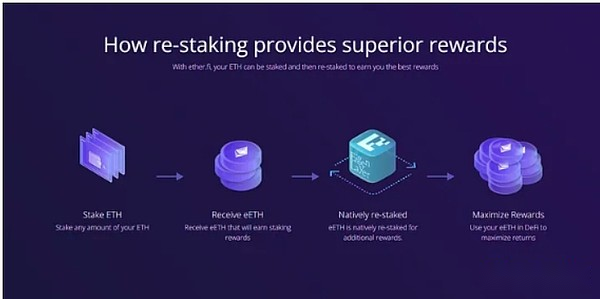
This protocol allows users to mint eETH by staking their ETH, the first native mobile re-staking token on Ethereum.By minting eETH, users can benefit from rewards generated by staking and restaking activities conducted through Ether.fi.
Ether.fi is the only protocol that allows stakers to control keys, thus reducing the risk of node operators and counterparty to the protocol.
Ether.fi runs Operation Solo Staker, which further realizes decentralization of Ethereum by starting nodes in different geographical regions.
-
Puffer
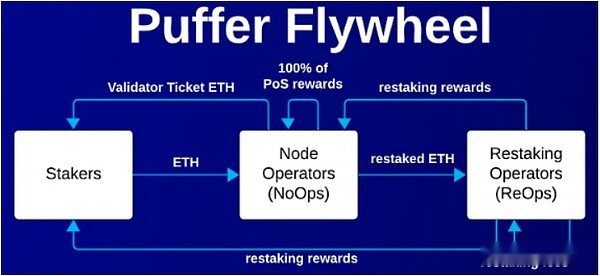
Puffer is a decentralized native mobile staking protocol (nLRP) built on EigenLayer, making native restaking on EigenLayer easier.It allows anyone to run Proof of Stake (PoS) validators on Ethereum and simultaneously increase their rewards.
Capital efficiency:Only less than 2 ETHs are required to run the validator.Punishment Protection: The first anti-punishment hardware support.MEV autonomy: Node operators can choose their own MEV strategy.
Swell allows users to obtain pass by staking or restaking ETH, while also receiving blockchain rewards and restaking AVS rewards.In return, users will receive a revenue-generating liquid token (LST or LRT) that can hold or participate in the wider DeFi ecosystem to obtain additional benefits.
2) Basket-based LRTs:
Allow users to pledge various tokens and obtain a single credential token representing the Liquid Staking Tokens (LSTs) basket of Restaking.Due to exposure to different tokens, users face risks to multiple counterparty parties.
-
Renzo
Eigenlayer’s policy manager guides users to restake policies.
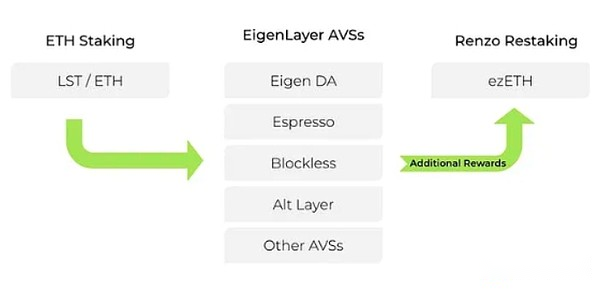
Key products: ezETH, a mobile token representing the user’s restaking position.
Function: Users can deposit mobile pledge tokens (stETH, rETH, cbETH) in exchange for ezETH.For each LST or ETH deposited on Renzo, it casts an equal amount of ezETH.
-
KelpDAO
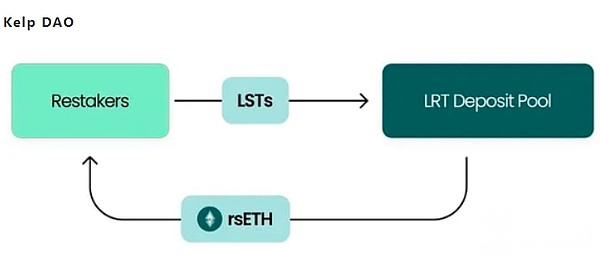
rsETH is a single fluidized re-staken token for all acceptable ETH LSTs.Kelp’s rsETH is a liquidized re-staking Token (LRT), providing liquidity for non-current assets deposited on re-staking platforms such as EigenLayer.
3) Isolated LRTs
It involves redeeming a specific type of Liquid Staking Token (LST) to the corresponding specific type of Liquid Restaked Token (LRT).By isolating the relationship between LSTs and LRTs, counterparty risk is minimized.
-
Astrid Finance
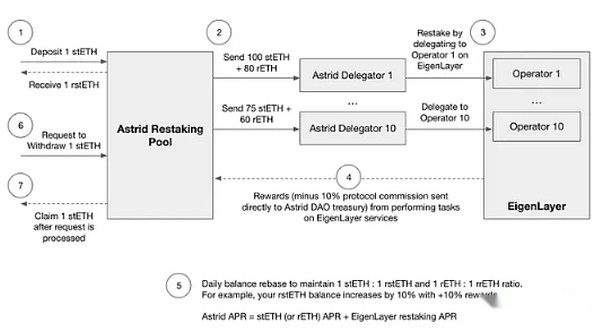
The user deposits LSTs (stETH, rETH or cbETH) into the re-staking pool and obtains the corresponding Astrid liquidation re-staking Tokens or LRTs (rsstETH, rrETH, rcbETH).The aggregated LSTs will be restaked on EigenLayer and delegated through multiple operators voted by Astrid DAO.The rewards obtained are compounded and distributed through balance rebase, and the user’s balance is automatically adjusted.
These protocols meet different user preferences and risk configurations, provide flexibility in managing pledged assets, and take into account factors such as counterparty risk and reward structure.
4. Latest progress in the fields of LRT protocol and EigenLayer
1) AVS provider extension
The number of AVS projects listed on the EigenLayer website has reached about 76, with new launches every day.

2) Growth of liquidity Restaking protocol
The Liquid Restaking protocol has been widely welcomed and adopted in projects such as Ether.fi, Puffer and Swell, attracting over $5 billion in total locked value (TVL).
3) EigenLayer’s TVL growth
EigenLayer’s total lock-in value (TVL) has increased fivefold from $2 billion in January to $11 billion.
4) Innovative Token Model
Various types of LRT protocols emerge, including local liquidization restaking (e.g. Ether.fi), basket-based LRTs (e.g. Kelp DAO), and isolated LRTs for specific Liquid Staking Tokens (LSTs).These diverse models provide users with multiple options to re-stake assets when managing counterparty risks and maximizing returns.
5. Conclusion
Similar to what we saw in decentralized trading platforms and borrowing protocols that Liquid Restaking Tokens become the most commonly used token, we can expect that the same situation will occur with LRTTokens.Many projects have created different types of liquid re-stake tokens with different advantages and disadvantages.
While this does introduce an additional leverage effect, the core increased risk comes from the new share reduction conditions leading to unlocking.This risk is not as complex or dangerous as the community may think.If the LRT protocol becomes more active, despite Ethereum’s huge market capitalization, it can still generate huge value, and we can expect the Ethereum DeFi ecosystem to become more active.

